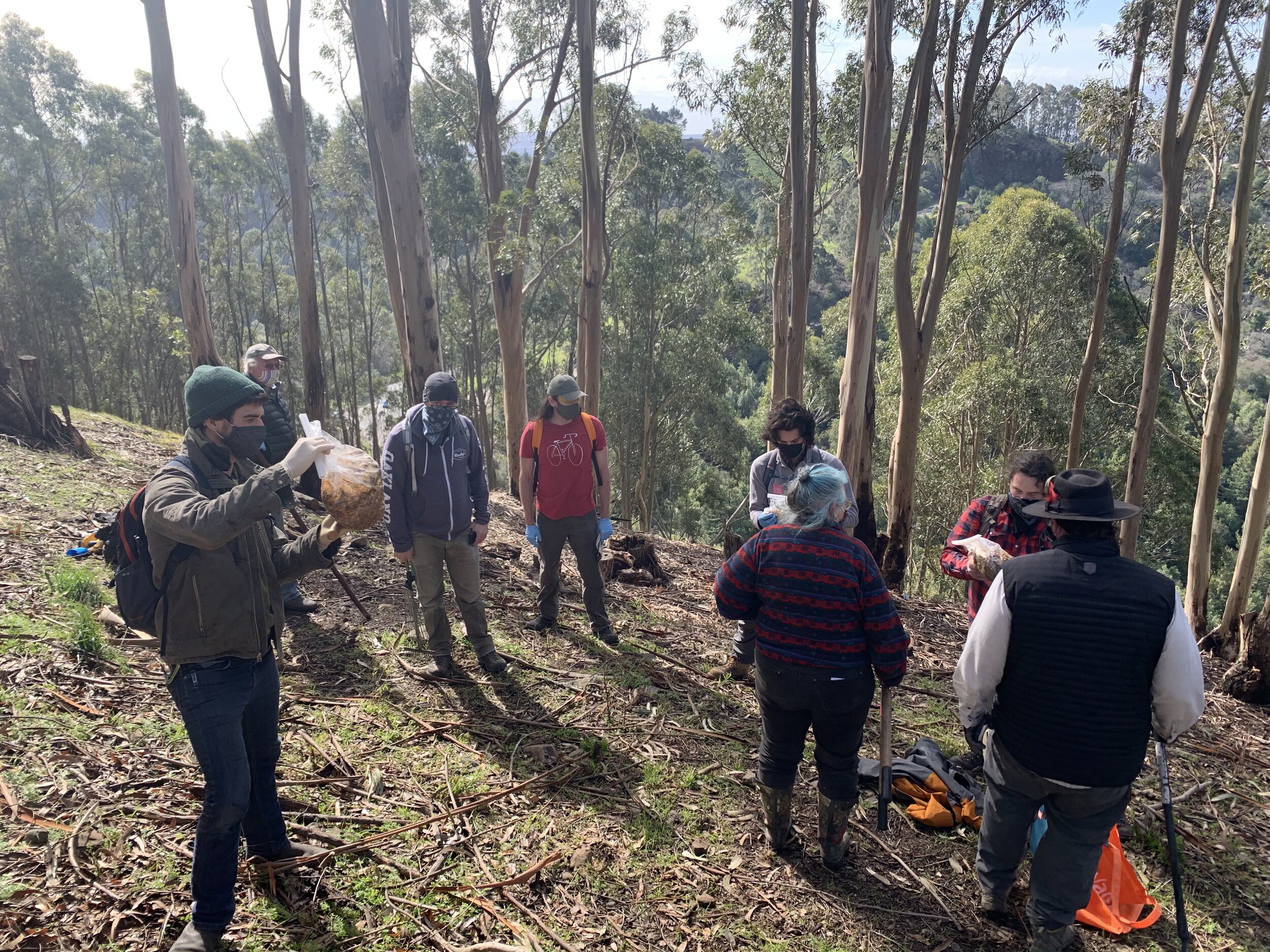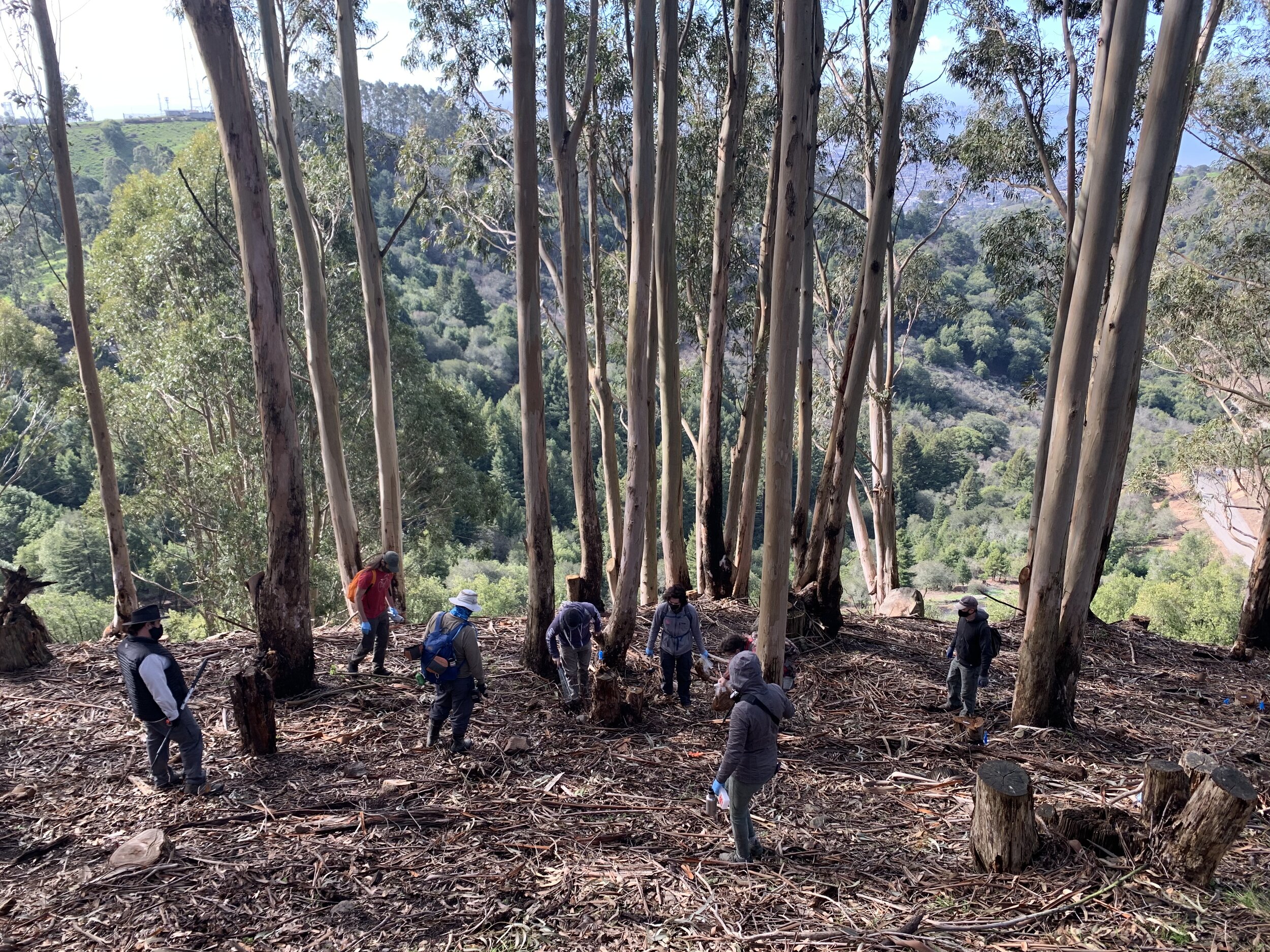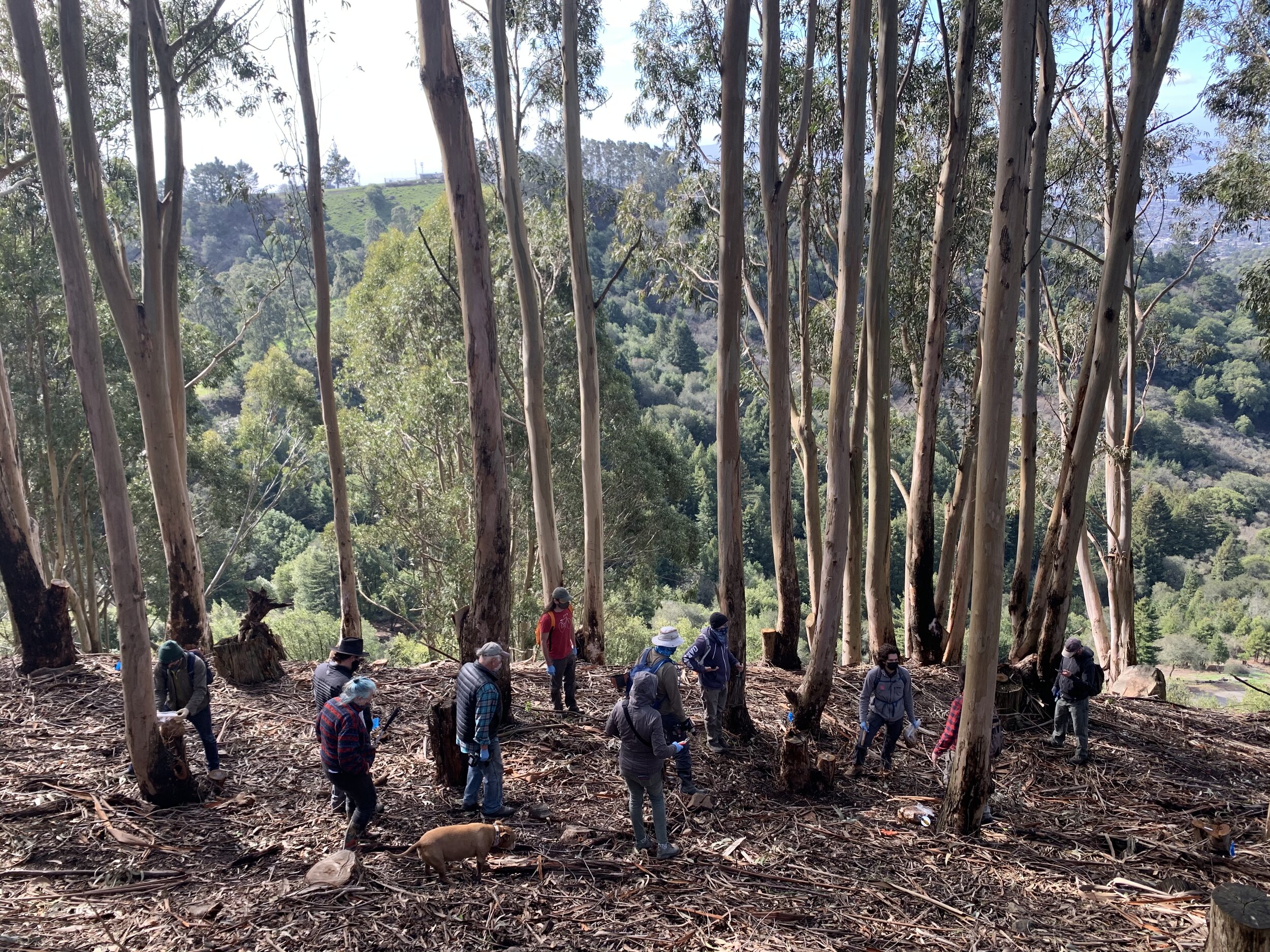Bay Area Applied Mycology is a collective of environmentally-minded mushroom enthusiasts seeking to enrich the environment through the cultivation & application of fungi, plants and bacteria. BAAM also seeks to educate and empower communities by placing simple cultivation strategies and access to information within reach of home gardeners, urban farmers and mushroom enthusiasts.
My journey with BAAM began in 2017, when I attended a general meeting at Omni Commons in Berkley, CA. I was new to mushroom culture and communities, having mostly self-studied fungi for years prior.
BAAM catalyzed me into new ways of relating to fungi alongside others. They have carved such a beautiful niche of like-minded, radical mycophiles adding to the ecosystem of growing fungi lovers and the mycological community at large!
I quickly became very involved in the organization and by the next year I was holding an officer position as secretary. After 3 years, I still hold my position as secretary along with many other roles of involvement.
I have participated in dozens of events and roles with BAAM: educating, presenting, fundraising, fungus fairs, lab work, cultivation workshops, and mycoremediation projects.
Applied mycology & community projects, grassroots at its finest!

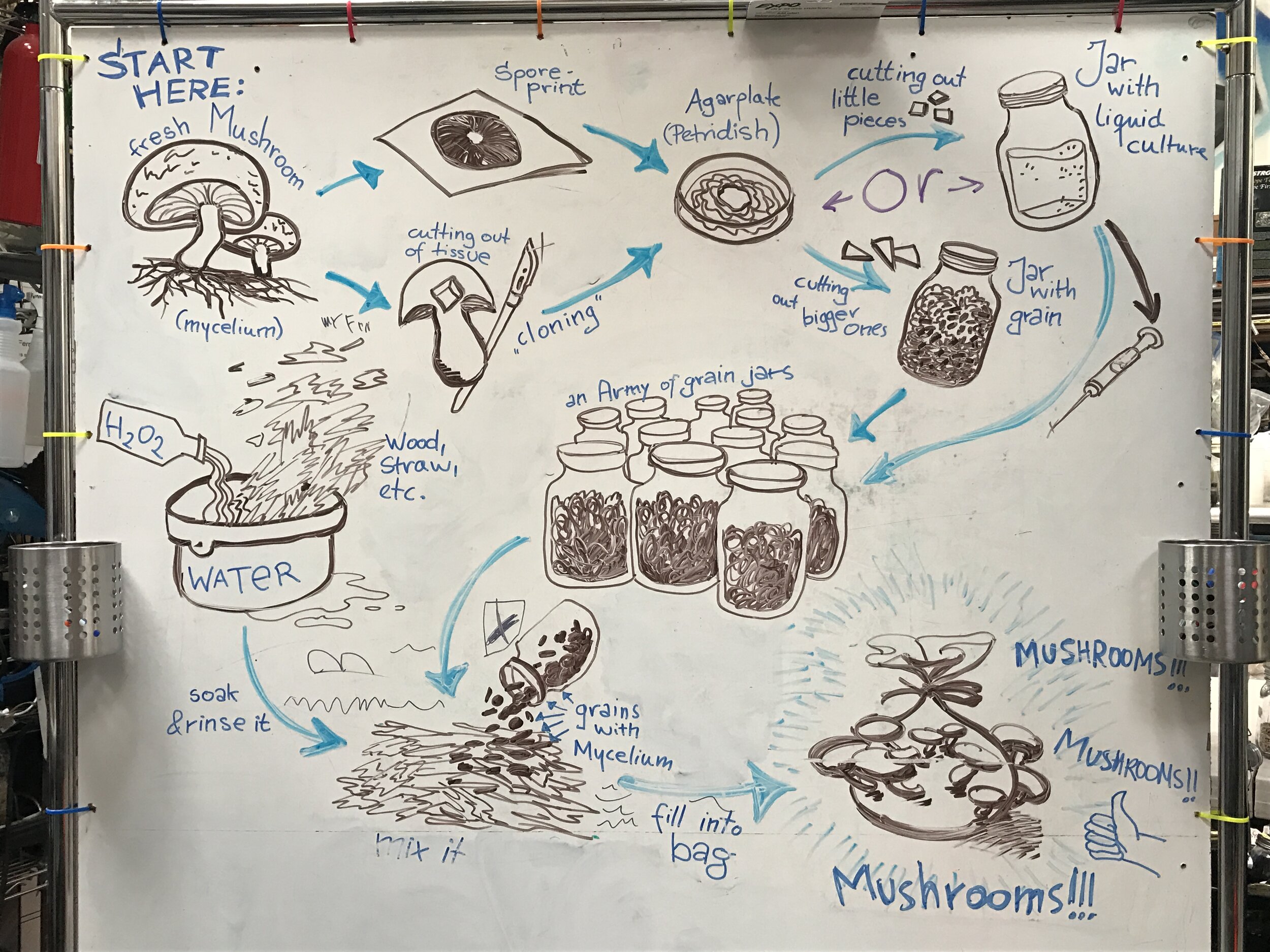



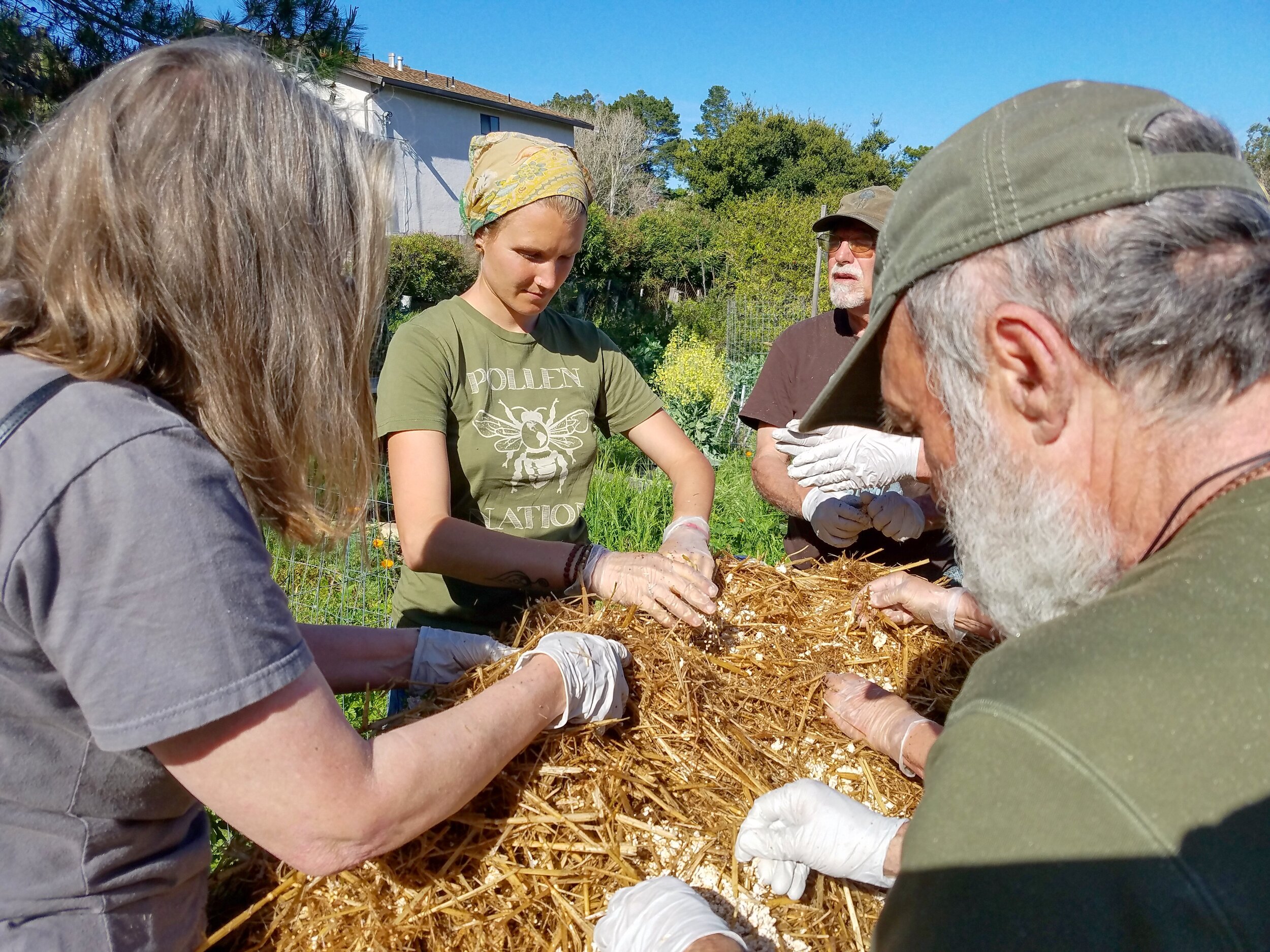
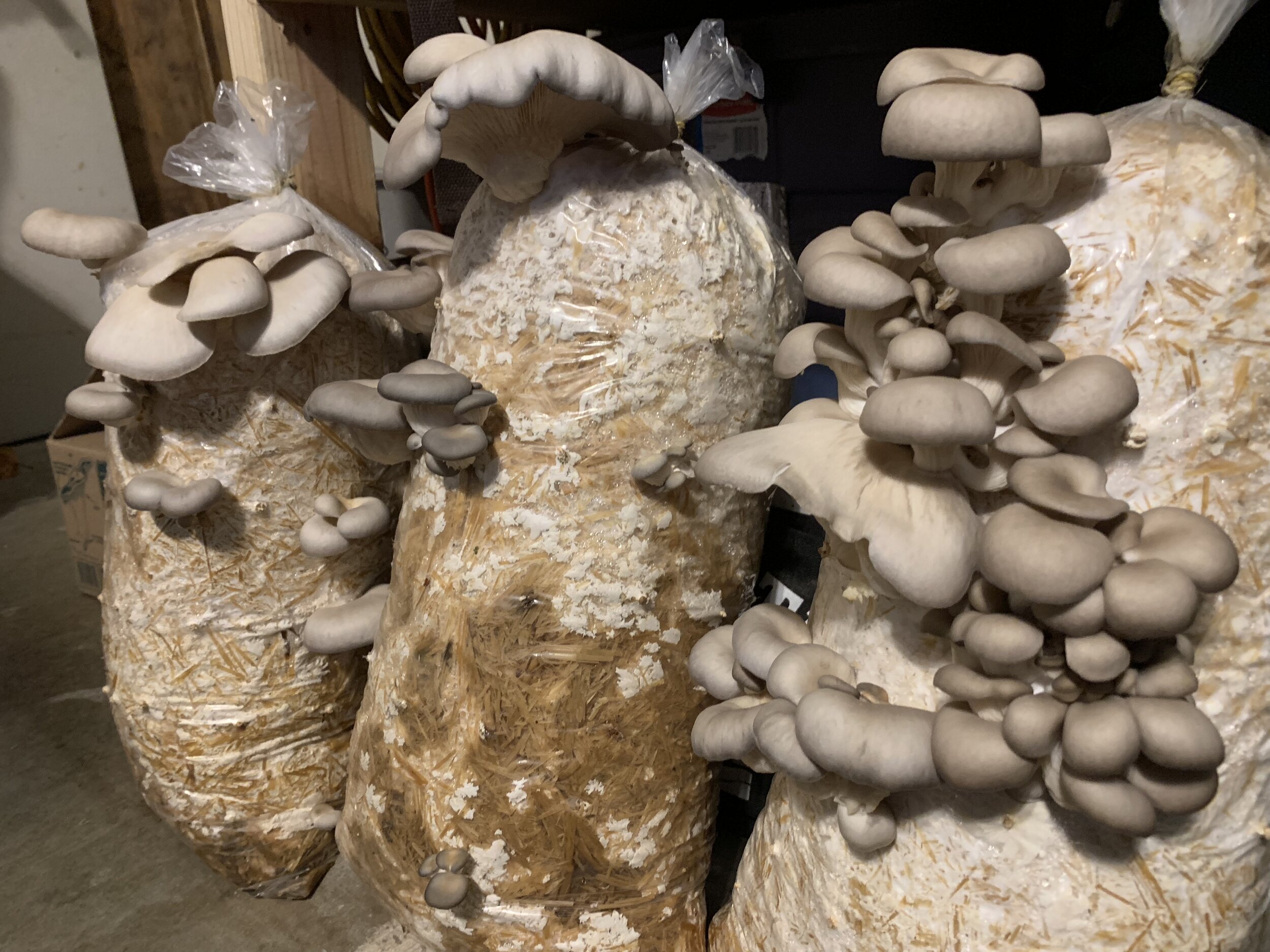



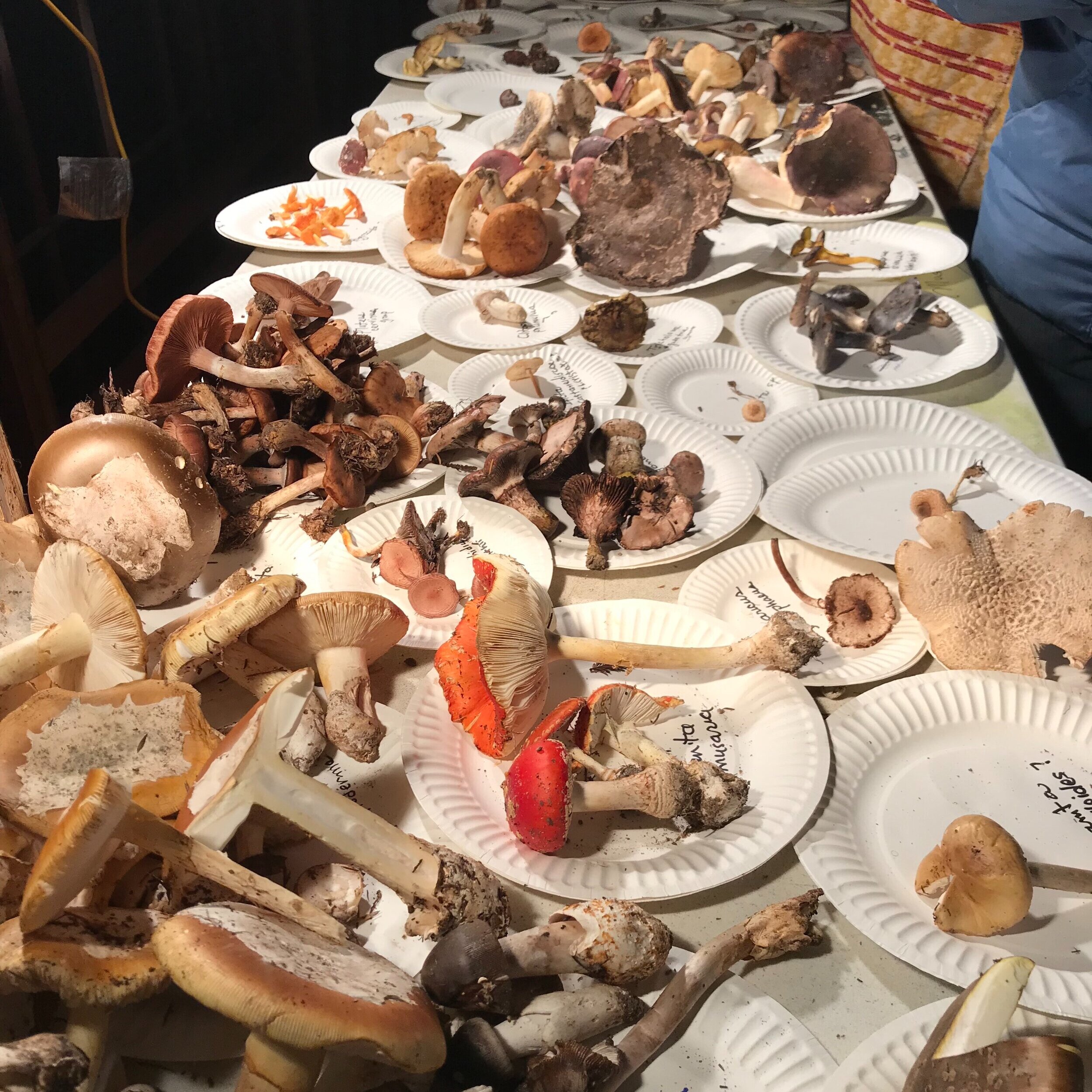

















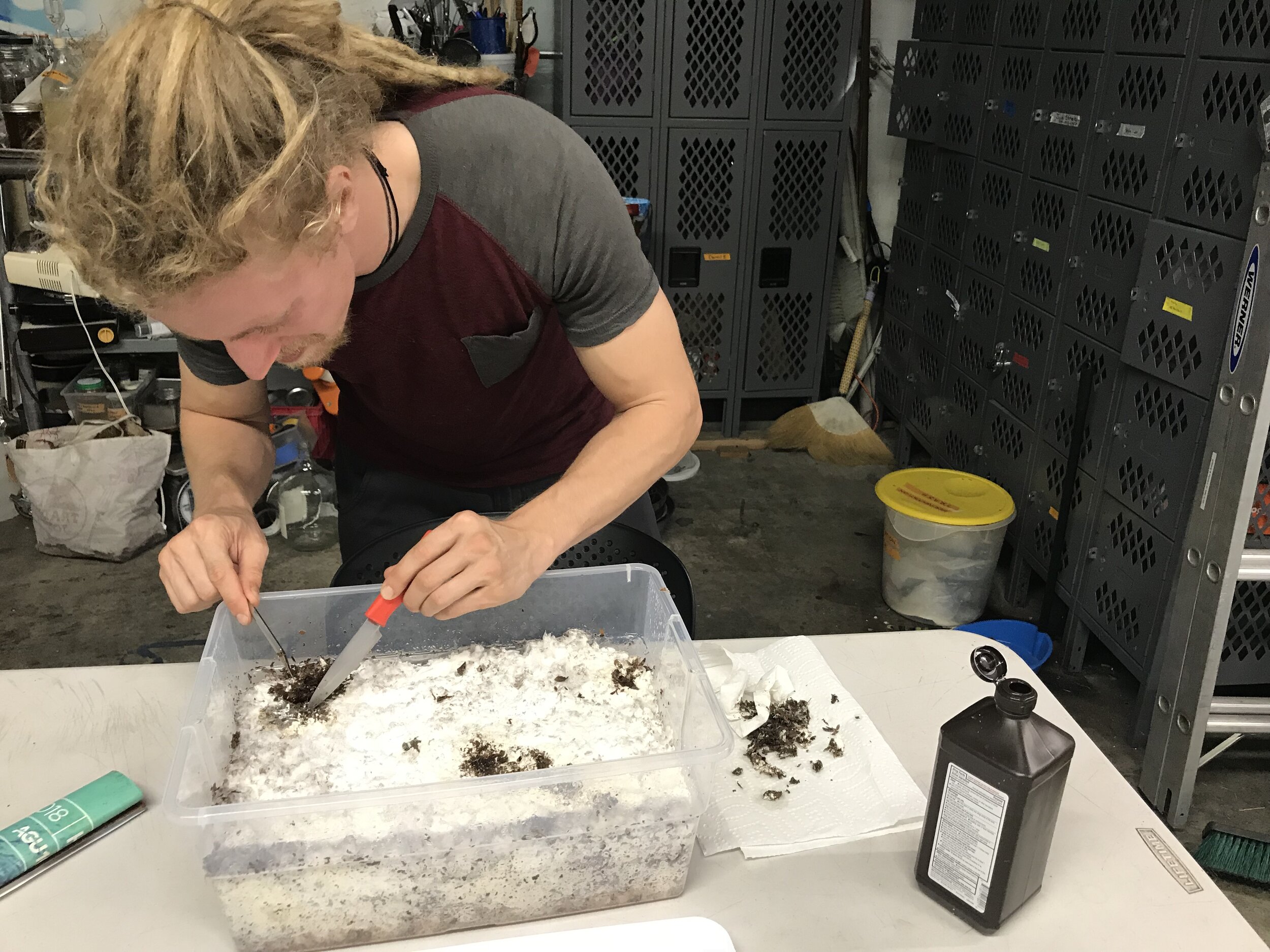














For more, see Projects on BAAM’s official website
Mycofiltration with Stropharia rugosoannulata
In 2019, a sewage pipe busted uphill from Terry Tobey’s property in the Oakland hills. Within days, she noticed her horses and dogs develop strange skin irritation and suffer hair loss; Terry also noticed plants dying near where the leakage was occurring. She began to understand the complex and harsh chemicals used in sewage treatment and how their combination with anaerobic bacterial populations could lead to these problems.
With the city’s neglect to address the issue, Terry called on BAAM to install a 250sqft. Stropharia rugosoannulata bed to attempt to mitigate the toxins and concentrated coliform bacteria populations.
Stropharia rugosoannulata’s mycelial rhizomorphs have high tensile strength and extraordinary surface area, forming dense mats resulting in highly efficient mycofiltration capabilities. This fungus has been (and continues to be) researched for its promising mycofiltration abilities, especially of bacteria such as Escherichia coli.
Find out more about the tragic ongoing sewage issues in Oakland and read more about Terry and others here. If you live in Oakland, please vote, write to city officials, and spread the word about this systemic injustice that threatens entire ecologies as well as human health.



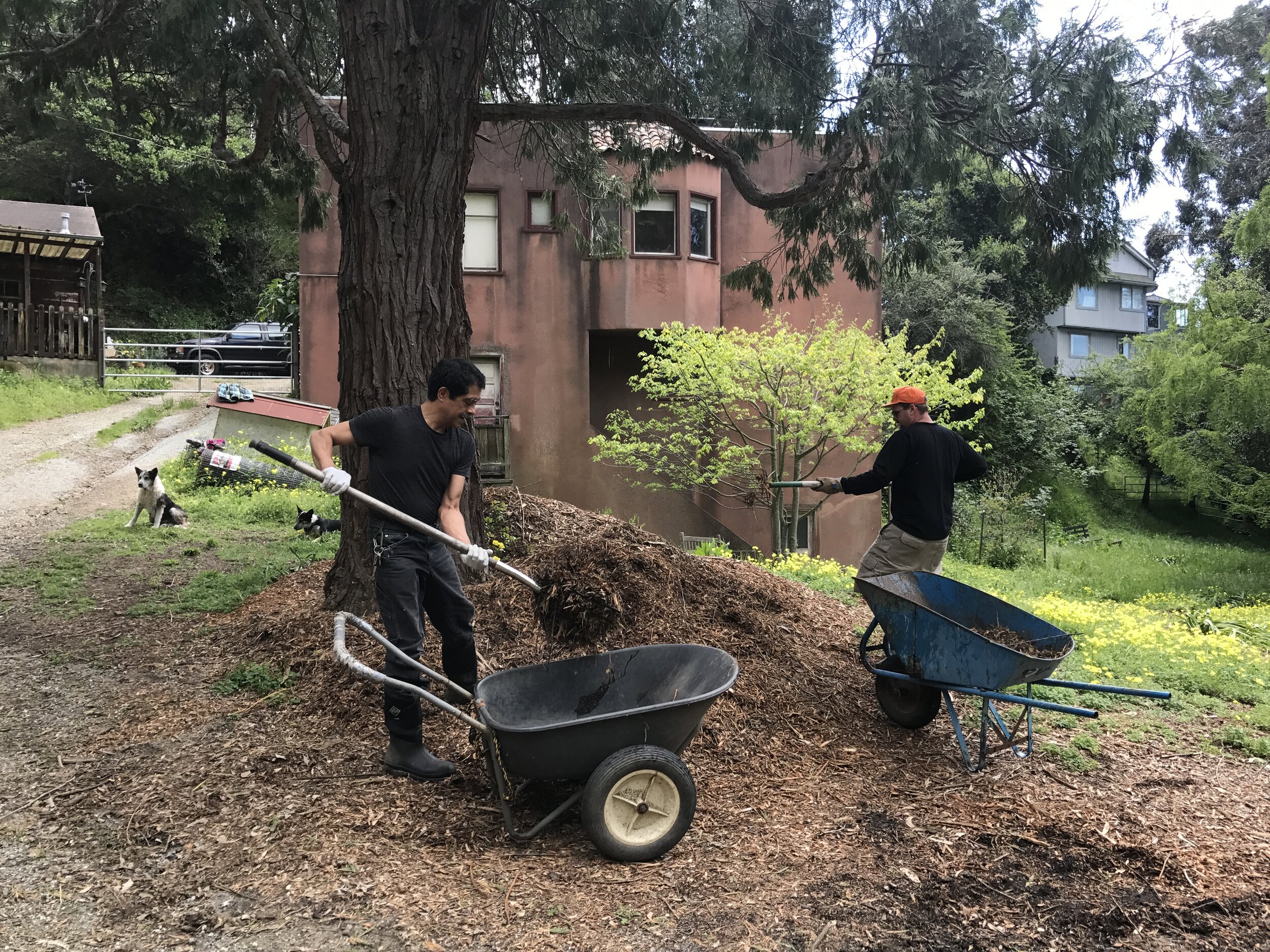





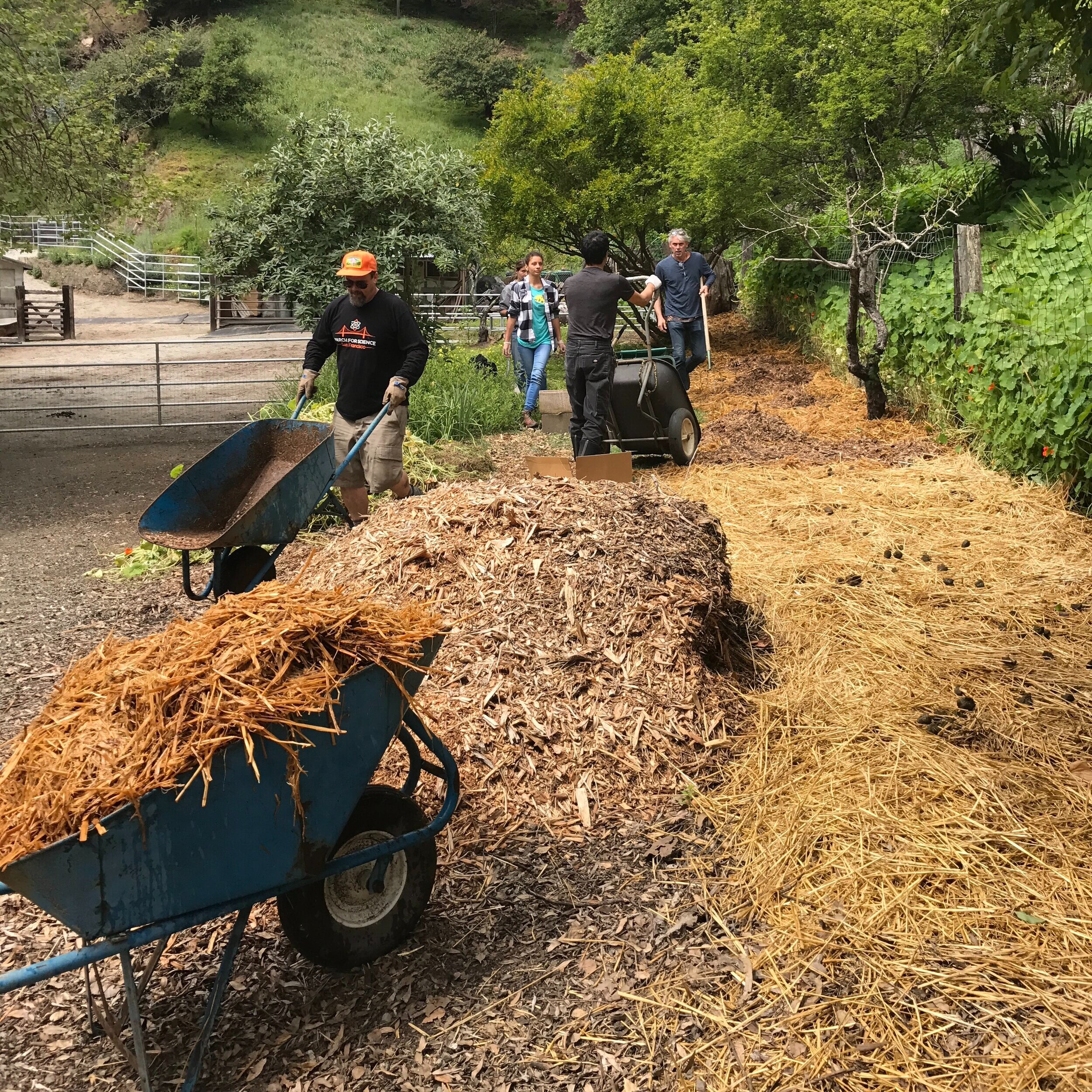









Decomposition of Motor oil with Pleurotus Mycelium
With this experiment, we attempted to replicate earlier trials to further document the efficiency of the common oyster mushroom’s mycelium to degrade crude oil.
We were going to use donated crude bunker oil. However, we soon realized in opening the donated jars that they had dangerously high vapor-pressure: explosions, volatile toxic compounds, no thank you! So we decided to use conventional motor oil instead.
We first grew liquid culture (LC) of Pleurotus ostreatus in quart jars of honey and tap-water. Then we prepared consistent measurements of finely/uniformly chopped straw soaked with distilled water in pint jars with Tyvek membranes that we then pasteurized. Once ready, the LC and oil were injected in varying ratios through sterilized silicone injection ports and the tests were incubated.
Data collection involved quantitative measurements of convex surface area covered by visible mycelium. The oil treatments were at no point detrimental - IE: more oil led to more myceliation. So if we tried this again (or if you do!), we would increase the oil:mycelium ratio until we found a point at which the mycelium just couldn't hang.
MycoForestry: Inoculating Eucalyptus Stumps in the Oakland Hills
Like it or not, Eucalyptus is a very successful and established tree in California and is growing rapidly in number and distribution.
This is a huge topic of concern relating to displaced Californian ecologies and fire prevention/mitigation. The management of Eucalyptus in the East bay region has typically involved cutting and removing the trees off-site and then applying Garlon, a “specialty” herbicide, to the remaining stumps to prevent re-growth. This herbicide application is quite controversial and affects downstream human and non-human communities.
BAAM decided to get involved and conduct a long-term experiment by.partnering with East Bay Municipal Utility District (EBMUD) and East Bay Regional Park (EBRP). Eucalyptus stumps were inoculated with a native species Western Jack ‘O’ Lantern (Omphalotus olivascens) that was originally found elsewhere, growing from Eucalyptus. Our experiment aims to determine whether O. olivascens can successfully limit or prevent the regrowth of the trees’ sprouts and possibly eliminate the use of Garlon in the future.



